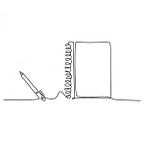Persepolis, Feminism and Identity
April 6 2021
This article may contain spoilers for Persepolis
I don’t read a lot of comics. I took a quick glance at Persepolis and I thought it was a romance story which I avoid at all costs. Having repeated this mistake more than once I returned to the comic book shop. Having recently finished Joe Saccos Palestine and returning to find the comic after having done proper research on it, whoops, it’s gone. Shame. I had to wait a while to order it again. I was not disappointed. The reason I strayed away from it was for its simplistic art style. I had read Anya’s Ghost which was recommended by one of my favourite authors Neil Gaiman and despite being a short read it was not bad nonetheless. Persepolis has the same simplistic art style. What more is that its similar to Saccos work where it also investigates not just the life of an individual but the culture, history and time period they lived in. In this case, Life in Iran after the revolution. I always wanted to learn more about Iran however the kind of dry, dull and boring work I’d end up reading was just telling the history of Iran at the time, not exactly the lives people lived then. This was exactly what I loved about Saccos work. I could just read a political work or I could be transported to the time period and given not just a recount of the events but a story as well.
The author. Marjane Satrapi recalls the story of her life quite eloquently. Her relationships with her family and friends are tender and you grow to enjoy the characters. You felt an emotional connection with the characters and the struggles they face against an oppressive regime, this is a theme I’ve grown quite fond of, reading about the lives of people living in countries from Palestine living under a tyrannical and bullyish apartheid regime, Russians living under the Kafkaesque Soviet Union and now an Iranian living under a sexist Islamic dictatorship. A running theme is the characters rebellion against the Iranian governments misogynistic laws, forcing women to wear headscarves, not being around men who aren’t related to you and not exposing too much skin. This is still relevant today unfortunately as women in Saudi Arabia, Iran and Afghanistan fight against laws that ban women from basic rights and forcing them to cover themselves. The encounters the main character goes through with the repressive government are quite comical and absurd though this is more commonplace than ever in the most regressive Muslim countries from the middle east where acid is thrown on the faces of women who don’t wear headscarves and couples being whipped for displays of affection.
The main character fights against Iranian religious and political propaganda in very subtle ways, here we get to witness a form of political activism no matter how little and this is what makes the story so strong. The story shows how brutal the regime was, the war with Iraq and the toll it took on people’s lives, the suffering, devastation and pain of a nation illuminated by the eyes of a child. Though not graphic the level of destruction we get to witness in this novel is quite severe. Eventually the main character travels to Austria at 14, despite this the character feels alienated in liberal Europe, making few friends and getting in trouble with authority figures (which is a running theme in the book). This is a phenomenon that many people who immigrate to a different country feel. Despite a love for western culture the main character simply doesn’t belong and this is very common for many who move to the west. A certain detachment is visible, a kind of disconnect. This poses a good question, which is more important, freedom or identity? It is quite hard people who move to a different country to adapt, in Emil Durkheim’s famous work Suicide he writes that many people who move to a different city without any family or friends have a higher rate of suicidality, perhaps this is just human nature? Community, belonging and family. Eventually the main character moves to Iran again and suffers a personal crisis, she doesn’t feel like she belongs anywhere anymore. However, she manages to get back on her feet and go to university and continues her struggle against her government, university and religious authorities. Afterwards life in Iran is no longer feasible and the main character leaves to Europe again where Satrapi lives today. There are very good takeaways from this novel, reading the journey of a women’s resistance to authority would delight any feminist or anyone with common sense, relating to the main characters struggle for identity will intrigue anyone with the desire to create their own identity. Having previously finished Read and Riot by Nadya Tolokno I got to appreciate reading political works showing a woman’s resistance and fighting to gain her rights having not really paid any attention to feminist literature before.
If you enjoyed this article, please feel free to visit my website at
